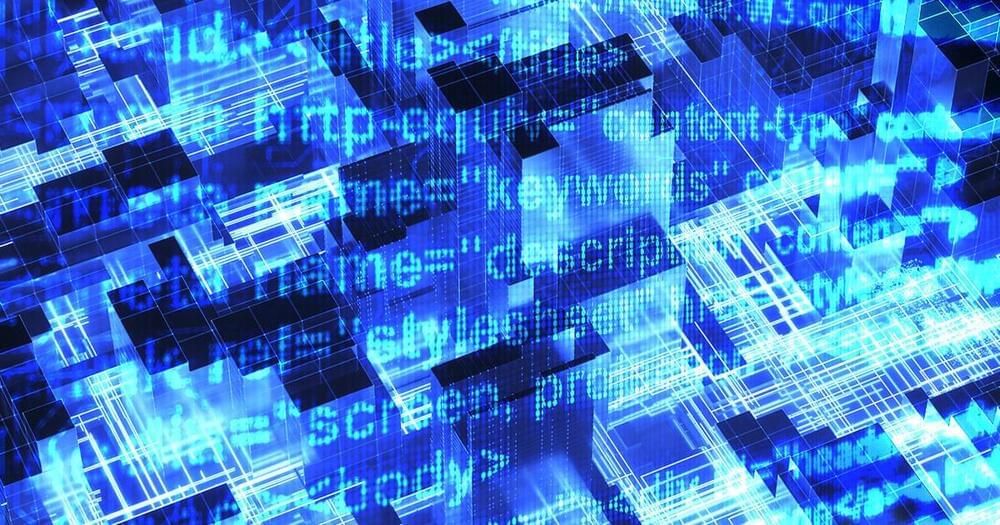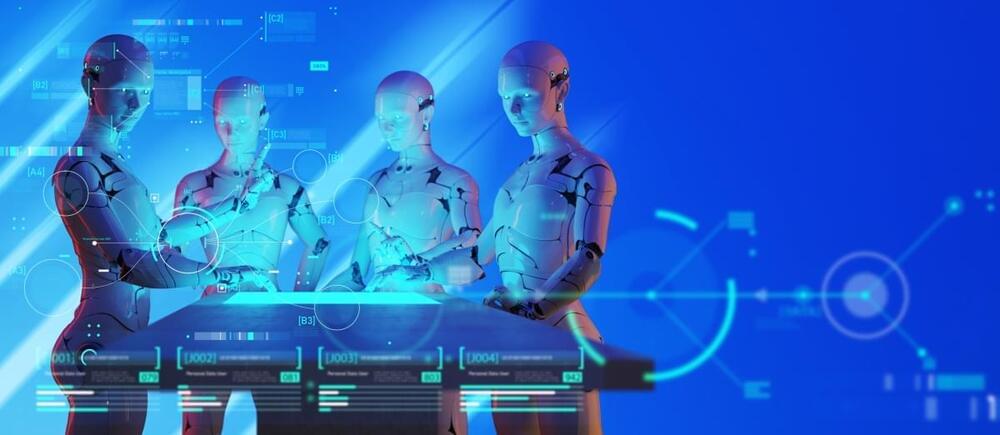Artificial Intelligence Latest News Tech news
The advancements of AI in bringing back your dead loved.

Artificial Intelligence Latest News Tech news
The advancements of AI in bringing back your dead loved.
The Aging and Drug Discovery Conference (ARDD) 2022 is pleased to present Alex Zhavoronkov from Insilico, with the talk A case study of the application of Pharma. AI platform for discovery and development of dual-purpose therapeutics targeting aging and disease.
Held in Copenhagen at the glorious Ceremonial Hall, this meeting gathers the most prominent figures of the aging and longevity research field, from scientists to clinicians, investors, developers, and everything in between. The fast growth of the conference is evidence of its great quality of it. In 2022 we had around 400 people on-site, and many others joined through the web.
To find out more check www.agingpharma.org #ARDD #ARDD2022 #Longevity
Lex Fridman Podcast full episode: https://www.youtube.com/watch?v=cdiD-9MMpb0
Please support this podcast by checking out our sponsors:
- Eight Sleep: https://www.eightsleep.com/lex to get special savings.
- BetterHelp: https://betterhelp.com/lex to get 10% off.
- Fundrise: https://fundrise.com/lex.
- Athletic Greens: https://athleticgreens.com/lex to get 1 month of fish oil.
GUEST BIO:
Andrej Karpathy is a legendary AI researcher, engineer, and educator. He’s the former director of AI at Tesla, a founding member of OpenAI, and an educator at Stanford.
PODCAST INFO:
Podcast website: https://lexfridman.com/podcast.
Apple Podcasts: https://apple.co/2lwqZIr.
Spotify: https://spoti.fi/2nEwCF8
RSS: https://lexfridman.com/feed/podcast/
Full episodes playlist: https://www.youtube.com/playlist?list=PLrAXtmErZgOdP_8GztsuKi9nrraNbKKp4
Clips playlist: https://www.youtube.com/playlist?list=PLrAXtmErZgOeciFP3CBCIEElOJeitOr41
SOCIAL:
- Twitter: https://twitter.com/lexfridman.
- LinkedIn: https://www.linkedin.com/in/lexfridman.
- Facebook: https://www.facebook.com/lexfridman.
- Instagram: https://www.instagram.com/lexfridman.
- Medium: https://medium.com/@lexfridman.
- Reddit: https://reddit.com/r/lexfridman.
- Support on Patreon: https://www.patreon.com/lexfridman
Thanks to Scopely for sponsoring this video — Download Star Trek Fleet Command on iOS & Android and battle in the Star Trek universe here: https://pixly.go2cloud.org/SH3UL
Check out how it would launch here:
https://www.youtube.com/watch?v=qXxl5Ef5lFg.
Discord: https://discord.gg/WXb565P9nQ
My News Channel: https://www.youtube.com/channel/UCD3cl0MmX6fGZzeAHt4JWJA
Join this channel to get access to perks:
https://www.youtube.com/channel/UCpM4zrZ9c_apiEj6CApj2yw/join.
Patreon:
https://www.patreon.com/foundandexplained
Short clip of Michael Levin, an American developmental and synthetic biologist at Tufts University, talking about Planarian and their capacity to regenerate their organs indefinetely, which makes then biologically immortal.
The remarks where given during a fascinating three-hour-long conversation with Lex Fridman that was aired on october 1st, 2022.
Lex Fridman is a Russian-American computer scientist, artificial intelligence researcher, and podcast host.
To watch the entire conversation clic here: https://youtu.be/p3lsYlod5OU
Andrej Karpathy is a legendary AI researcher, engineer, and educator. He’s the former director of AI at Tesla, a founding member of OpenAI, and an educator at Stanford. Please support this podcast by checking out our sponsors:
- Eight Sleep: https://www.eightsleep.com/lex to get special savings.
- BetterHelp: https://betterhelp.com/lex to get 10% off.
- Fundrise: https://fundrise.com/lex.
- Athletic Greens: https://athleticgreens.com/lex to get 1 month of fish oil.
EPISODE LINKS:
Andrej’s Twitter: http://twitter.com/karpathy.
Andrej’s YouTube: http://youtube.com/c/AndrejKarpathy.
Andrej’s Website: http://karpathy.ai.
Andrej’s Google Scholar: http://scholar.google.com/citations?user=l8WuQJgAAAAJ
Books mentioned:
The Vital Question: https://amzn.to/3q0vN6q.
Life Ascending: https://amzn.to/3wKIsOE
The Selfish Gene: https://amzn.to/3TCo63s.
Contact: https://amzn.to/3W3y5Au.
The Cell: https://amzn.to/3W5f6pa.
PODCAST INFO:
Podcast website: https://lexfridman.com/podcast.
Apple Podcasts: https://apple.co/2lwqZIr.
Spotify: https://spoti.fi/2nEwCF8
RSS: https://lexfridman.com/feed/podcast/
Full episodes playlist: https://www.youtube.com/playlist?list=PLrAXtmErZgOdP_8GztsuKi9nrraNbKKp4
Clips playlist: https://www.youtube.com/playlist?list=PLrAXtmErZgOeciFP3CBCIEElOJeitOr41
OUTLINE:
0:00 — Introduction.
0:58 — Neural networks.
6:01 — Biology.
11:32 — Aliens.
21:43 — Universe.
33:34 — Transformers.
41:50 — Language models.
52:01 — Bots.
58:21 — Google’s LaMDA
1:05:44 — Software 2.0
1:16:44 — Human annotation.
1:18:41 — Camera vision.
1:23:46 — Tesla’s Data Engine.
1:27:56 — Tesla Vision.
1:34:26 — Elon Musk.
1:39:33 — Autonomous driving.
1:44:28 — Leaving Tesla.
1:49:55 — Tesla’s Optimus.
1:59:01 — ImageNet.
2:01:40 — Data.
2:11:31 — Day in the life.
2:24:47 — Best IDE
2:31:53 — arXiv.
2:36:23 — Advice for beginners.
2:45:40 — Artificial general intelligence.
2:59:00 — Movies.
3:04:53 — Future of human civilization.
3:09:13 — Book recommendations.
3:15:21 — Advice for young people.
3:17:12 — Future of machine learning.
3:24:00 — Meaning of life.
SOCIAL:
- Twitter: https://twitter.com/lexfridman.
- LinkedIn: https://www.linkedin.com/in/lexfridman.
- Facebook: https://www.facebook.com/lexfridman.
- Instagram: https://www.instagram.com/lexfridman.
- Medium: https://medium.com/@lexfridman.
- Reddit: https://reddit.com/r/lexfridman.
- Support on Patreon: https://www.patreon.com/lexfridman

“Don’t believe everything you see on the Internet” has been pretty standard advice for quite some time now. And according to a new report from European law enforcement group Europol, we have all the reason in the world to step up that vigilance.
“Experts estimate that as much as 90 percent of online content may be synthetically generated by 2026,” the report warned, adding that synthetic media “refers to media generated or manipulated using artificial intelligence.”
“In most cases, synthetic media is generated for gaming, to improve services or to improve the quality of life,” the report continued, “but the increase in synthetic media and improved technology has given rise to disinformation possibilities.”

Researchers have created a device that uses machine vision to spot cockroaches and zap them with a laser. They say the method could offer a cheaper and more environmentally friendly alternative to insecticides.
Ildar Rakhmatulin at Heriot-Watt University in Edinburgh, UK, and his colleagues equipped a laser with two cameras and a small computer running an AI model that can be trained to target certain types of insect.

Register now for your free virtual pass to the Low-Code/No-Code Summit this November 9. Hear from executives from Service Now, Credit Karma, Stitch Fix, Appian, and more. Learn more.
As AI spreads throughout the enterprise, organizations are having a difficult time balancing the benefits against the risks. AI is already baked into a range of tools, from IT infrastructure management to DevOps software to CRM suites, but most of those tools were adopted without an AI risk-mitigation strategy in place.
Of course, it’s important to remember that the list of potential AI benefits is every bit as long as the risks, which is why so many organizations skimp on risk assessments in the first place.
❤️ Check out Runway and try it for free here: https://runwayml.com/papers/
Use the code TWOMINUTE at checkout to get 10% off!
📝 The paper “High Definition Video Generation with Diffusion Models” is available here:
https://imagen.research.google/video/
📝 My paper “The flow from simulation to reality” with clickable citations is available here for free:
https://rdcu.be/cWPfD
🙏 We would like to thank our generous Patreon supporters who make Two Minute Papers possible:
Aleksandr Mashrabov, Alex Balfanz, Alex Haro, Andrew Melnychuk, Benji Rabhan, Bryan Learn, B Shang, Christian Ahlin, Eric Martel, Geronimo Moralez, Gordon Child, Jace O’Brien, Jack Lukic, John Le, Jonas, Jonathan, Kenneth Davis, Klaus Busse, Kyle Davis, Lorin Atzberger, Lukas Biewald, Luke Dominique Warner, Matthew Allen Fisher, Matthew Valle, Michael Albrecht, Michael Tedder, Nevin Spoljaric, Nikhil Velpanur, Owen Campbell-Moore, Owen Skarpness, Rajarshi Nigam, Ramsey Elbasheer, Steef, Taras Bobrovytsky, Ted Johnson, Thomas Krcmar, Timothy Sum Hon Mun, Torsten Reil, Tybie Fitzhugh, Ueli Gallizzi.
If you wish to appear here or pick up other perks, click here: https://www.patreon.com/TwoMinutePapers.
Thumbnail background design: Felícia Zsolnai-Fehér — http://felicia.hu.
Chapters: